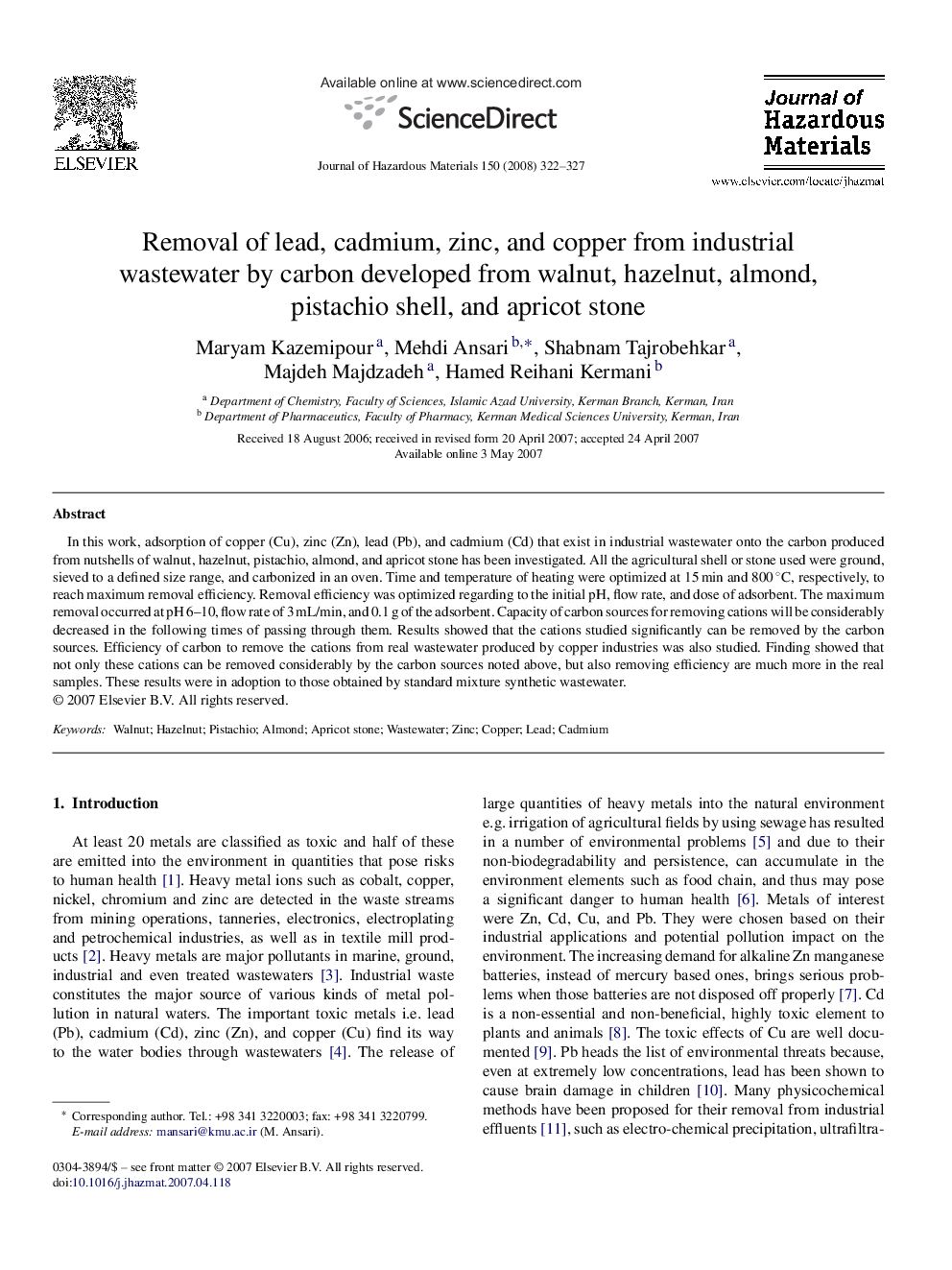| Article ID | Journal | Published Year | Pages | File Type |
|---|---|---|---|---|
| 583963 | Journal of Hazardous Materials | 2008 | 6 Pages |
Abstract
In this work, adsorption of copper (Cu), zinc (Zn), lead (Pb), and cadmium (Cd) that exist in industrial wastewater onto the carbon produced from nutshells of walnut, hazelnut, pistachio, almond, and apricot stone has been investigated. All the agricultural shell or stone used were ground, sieved to a defined size range, and carbonized in an oven. Time and temperature of heating were optimized at 15 min and 800 °C, respectively, to reach maximum removal efficiency. Removal efficiency was optimized regarding to the initial pH, flow rate, and dose of adsorbent. The maximum removal occurred at pH 6-10, flow rate of 3 mL/min, and 0.1 g of the adsorbent. Capacity of carbon sources for removing cations will be considerably decreased in the following times of passing through them. Results showed that the cations studied significantly can be removed by the carbon sources. Efficiency of carbon to remove the cations from real wastewater produced by copper industries was also studied. Finding showed that not only these cations can be removed considerably by the carbon sources noted above, but also removing efficiency are much more in the real samples. These results were in adoption to those obtained by standard mixture synthetic wastewater.
Related Topics
Physical Sciences and Engineering
Chemical Engineering
Chemical Health and Safety
Authors
Maryam Kazemipour, Mehdi Ansari, Shabnam Tajrobehkar, Majdeh Majdzadeh, Hamed Reihani Kermani,
